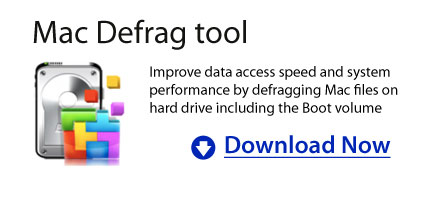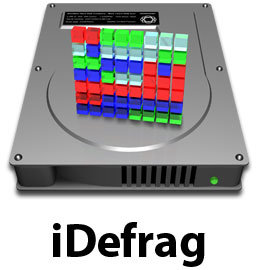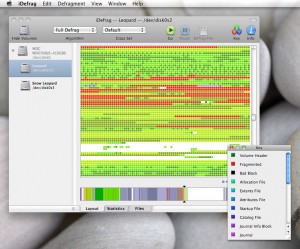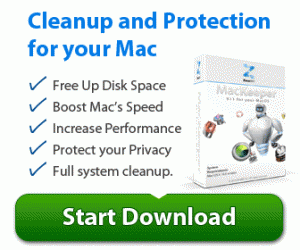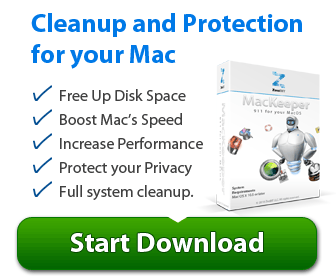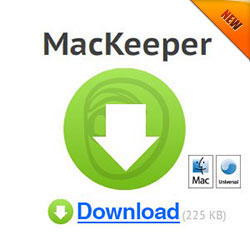Defragment Mac OS: Do You Need To?
April 16, 2011
For Mac users worrying their fragmented disk is no sweat because the system itself is built with routine maintenance that is capable of defragging the hard drive automatically. However, running some third party defragging software to defragment Mac OS can help most of the time to speed up its speed and boost its performance.
Disk optimization vs Fragmentation
Disk optimization is a process where files that are stored in different locations in a volume are streamlined. All the files as well as metadata are rearranged and reorganized to increase the data time access while minimizing the hard drive head from moving. On the other hand, fragmentation happens when files are altered and stored in the volumes over time as it gets filled with other files, the different parts of the files are stored in different locations. When files that are fragmented are put altogether then this is a process known as defragmentation. But be aware that failure may happen during the defragmentation process sp it is important to have a backup copy of all your important files in case you might want it for future use.
Is there a need for Defragmentation?
The Apple itself doesn’t recommend defragging the Mac OS X because of the following reasons:
- Newer hard disk capacity of Mac today are greater compared before. With more free space available for all your files, there is lesser chance of the file system to get fragmented at all. With Mac OS Extended formatting which is the HFS Plus, this prevents reusing some space from files that have been deleted in order to avoid filling smaller spaces that are freed up from recent files that has been deleted.
- The Mac also included the delaying of allocation for Mac OS X Extended formatted volumes. This allows the smaller space to group together into single large space in one area in the hard disk.
- Fragmented files often happen when files are altered to existing files. But with newer Mac hard drives that have better caching and faster fragmentation rarely happens. It even supports the Hot File Adaptive Clustering and Mac OS X can even automatically defragment files.
- With Mac’s new hard drive that have aggressive read ahead and write behind caching capabilities, fragmentation has less effect on the hard drive as well as impact to the Mac system performance.
However, it won’t hurt your Mac system at if you choose to defrag the hard drive. You can choose from a wide variety of defragging software that is available in the market. Some of it comes as a freeware as well. When it comes to defragging software one of the recommended tool for Mac is the iDefrag. But prior to defragging process it is important to backup all the needed files from the hard drive because sometimes software may fails and defragging process can take longer. It is important also to choose an idle time when Mac system is not in use if you wish to defrag Mac hard drive.
If your in doubt if you need to defragment Mac OS, go ahead anyway because there is no harm in doing it. As long as you choose the right defragging tool and backup all your important files before proceeding with the process.
Defragging Mac Hard Drive? Do it with iDefrag
April 12, 2011
Mac users know that they don’t have to worry about defragging a Mac hard drive. This is because the Mac system itself is built in with routine maintenance capable of handling fragmented files automatically. But doing a defragmentation process can quite helpful in making the system performance speed up and improve as well. This is where iDefrag third party defragging software comes in.
The Mac OS X has its own HFS file system that puts all the files altogether in the hard disks. Even if does not grouped all the files together for quicker access but it offers better space at the start and end of the disks allowing the files to expand easily on its size without the need for undergoing a lot of fragmentation. This is applicable on large disks that has greater space does defragging is not necessary at all.
However this does not mean that the HFS file system does nit experience file fragmentation because in the long run this can happen when the disk is getting full of stored files and at the same time is already running out of space. If Mac users are constantly creating and deleting large files, the space between the disks soon adds up and files will end up getting fragmented. This is where the system needs to have defragging too to shrink all these large files and organized it better.
When it comes to degragging Mac, one of the leading defragging tools is the iDefrag. It has two parts. This is the general interface and the other defrag interface run during the booting process. If you intend to defrag Mac OS make sure that you are not using the system itself. The general interface of iDefrag is quite simple and easy to use. Once the application is run, select the disk that you want the defragging process to take place. It will show a list of files where it is located and the amount of fragmentation. Then finally click on the final step in defragging the disk. Once done an improved system performance will result from it.
The applications have its info pane where are shows the exact file name, including its size, location and other details regarding the files. But be aware that the defragging process can take a long time to run. So it is a protocol also to backup all your important files in case the software will fail during the defragging process. But in the end, you can expect that the application is really good at a decent price offering of $37. The program itself uses different defragging algorithms, support hot file zone, and monitors the hard disk temperature and a lot more.
The next time you what to consider defragging Mac hard drive, it is just right to do it anyway because this can be beneficial for the Mac system itself. When it comes to selecting a defragging tool, one of the name catching up on the list is the iDefrag that is capable of defragging and optimizing the Mac system.
iDefrag: A Mac Defrag Freeware
April 10, 2011
If you are frequently using you Mac over time you will notice that the Mac system slows down. This is quite true if your one of the Mac users that constantly run security updates replaces operating systems components and creates and deletes large files. Chances are you are increasing files that are fragmented in the hard disk and even degrading the performance of Mac system. One of the solution to these is using Mac defrag freeware that will defrag the hard drive and improve the system performance in the process.
If you’re looking for defragging software for Mac OS X, here’s one of the available defrag freeware that you can download readily:
iDefrag Mac Defragger
iDefrag solves fragmented files in the hard disk by defragmenting and optimizing the file system of Mac in the process. It has the following features and capabilities:
- Defrag individual files: Allows you to select and defragment individual files without affecting the rest of the hard disk.
- No need for bootable CD/DVD: All you need to do is click the Go options and iDefrag will reboot automatically the machine into special mode and run the defragging process without the need for separate boot disk.
- Improved performance: It is packed with performance tweaking routines that speed up the Mac system.
- Improved user interface: It has easy to use and understand user interface that has reduced cluttered options and improved accessibility for users.
- Full support the Mac OS X Snow Leopard: It works well with the Mac OS X latest version and even the Apple’s latest hardware specifications.
- Works with Time Machine: it is even safer to use with the Time Machine back up.
- Supports the journaled file systems: It supports the journaled file system and knows how to deal with it automatically. You don’t need to turn off the journaling in order to defrag or optimize the hard disk.
- Supports HFS+: It deals with the case sensitive HFS+ too for compatibility with the UNIX software.
- Supports Hot Zone: It supports the hot zones and places the files to the right location.
10. Thermal Monitoring: While defragging the hard disk the iDefarg application will monitor also the temperature of your disk. Once it is already warm, the application will have to wait for the disk to cool down before proceeding to defragging process.
11. Uses powerful defragmentation algorithms: You can either choose optimize or compact disk if you want to optimize the Mac system and rearrange the files in the hard disk.
12. Defragment the disk even if it is in use: It can even run simple defragmentation process even if the disk is still in use.
13. AppleScript and Automator Support: It also supports AppleScript and has Automator action without the need to learn about AppleScript while defragging the process.
iDefrag is simply one of the recommended Mac defrag freeware that is capable of tweaking the performance of your Mac system, defragging the files in the hard disk and reorganizing everything. All you need to do is wait for the process to take off and you will see an improve performance of the Mac system afterwards.
Incoming search terms:
Mac OS X Defrag: Is It Really Necessary?
April 8, 2011
Mac OS X defrag is not necessary all the time because the operating itself has its own built-in journaled files system that already handles defragmentation automatically. But it is still advisable to choose the right third party defragmenting applications that will deal with the files in the hard drive and reorganize it together and improving the system’s performance in the process.
File Fragmentation: What Is It?
Fragmentation of files happens when it is scattered on different locations on the hard drive. This happens when large files are frequently created, modified and deleted. This is quite true when you create new files and delete the third one. If the new file that has been created is larger than the third file, the Mac OS X file system will store the new file to the space occupied by the third file and the remaining will be stored to other locations. If you want to access this file, the system will have to look at different places thus taking longer time to access this file.
Is There a Need To Defrag Mac OS X?
For Mac users they don’t need to worry about their hard drive getting defragmented because the system itself does not need to be frequently defragmented because it is already built with routine maintenance that deals with defragging process automatically. Although fragmentation happens in the system but this does not affect the entire performance of the Mac system. But if you still frequently create and delete large files this can really bring significant degradation in the Mac performance.
How to Defrag Mac OS X?
If you already notice that the Mac system already slowed down its performance it is about time that you use and install third party defragmenting applications for Mac OS X. Although the Apple itself does not recommend any defragmenting tool for their Mac but you can choose from the widely available defragging software in the market and even the Macintosh Products Guide will tell what defragging software to choose for your Mac system.
When it comes to defragging the Mac OS X, one of the best and recommended tools is the iDefrag that is quite easy to use and uses five different defragging algorithms. It even supports journaling, case sensitive filenames and HFS+. You can also use its free trial version and you can purchase the application at a price of $37. If you plan to run defragging software in your Mac make sure that you are not using your Mac because it can take several hours to defrag Mac OS X.
When defragging Mac hard drive it really requires large amount of data to be reorganized and rearranged. There is a larger risk that you might lose some important data in the process so it is important that you backup all the important files before defragging the hard drive. Once the defragmentation process is done, you will notice that the Mac’s performance has greatly improved and accessing files takes faster time.
Mac OS X defrag is quite beneficial in the process because this can tweak the performance of your Mac system and even resolve the issues on fragmented files. You only need to select the right defragging software that will work effectively on your Mac system and make sure that you backup all your important files before you proceed to defragging the Mac system.
Incoming search terms:
Defrag Macbook: How to Do It?
April 6, 2011
When large files are created and deleted frequently chances are they become fragmented and even results to slow down of Mac performance. If this happens it’s about time to defrag Macbook and you can do this by either using third party defragging applications or doing it the manual way which is quite risky.
Defrag MacBook with Third Party Applications
The newer versions of Mac operating system has already built in routine techniques that is needed in optimizing the hard disk. It uses the HFS+ (Hierarchical File System Plus) that defrags the hard disk automatically. No matter how frequent you create and open files it has great impact to the file system performance. Once the Macbook slows down its performance then chances are this is already fragmented and even degrade the whole Mac system performance.
It is quite recommended to defrag Macbook when the operating system already slowed down. Although the Apple Company doesn’t recommend the necessary applications that will defrag the hard disk but with the wide variety of third party software you can choose which one will deal with defragging process effectively. There are several companies that offers defragmentation applications for Macbook system itself. One of the recommended tools for Mac is the iDefrag. This can be downloaded readily from the developer’s site and is offered at a price value of $35.00. But then you can try its trial version also and see what it can do to your Macbook system. This applications is quite easy to use and even scan the hard disk before determining whether you need to defrag the Mac system or not.
Once the iDefrag application is installed in the Mac, it is needed to create the boot disk with the use of CD, then boot from the disk to run the iDefrag applications. Once running it will scan the hard disk and start performing the defragging process. You can choose from the different algorithms offered by the application from Compact, Full, Quick, etc. Once the defragmentation is done, restart the Mac and you will see an improve performance afterwards.
Other Ways to Defrag Mac Disk
If you have slow down Macbook performance but don’t want to purchase third party applications to defrag the hard disk, you can try alternate ways to defrag Macbook and this can be done by:
- Backing up all the important data then installing again the Mac OS X and then install and recover all the files back to the hard disk. But doing this can take a longer process.
- Back up all the files from the hard disk to external data storage such as USB or hard disk. Then trash the files in the Mac. And then retrieve back the files from external drive back to the Macbook.
Once the Macbook is getting slow on its performance this will tell you that the Mac system is already fragmented. It is quite recommended to defrag Macbook and you can either do this manually by backing up all the files in the hard disk and reinstalling the Mac OS X and the other is installing third party applications that perform defragging process. The latter process is quite recommended way to do it.
Incoming search terms:
If you are using your Mac system more often and you are creating, importing, moving and copying files from time to time, chances are your hard disk may be fragmented. For Mac system this is something that you worry less because the system itself is built with routine maintenance that is run periodically. However for new to Mac system they wonder if how can they deal with fragmentation problem and do they need a defragmenter for Mac?
Why Defragment Mac Hard Drive?
If you’re one of the Mac users that move files around, delete applications and emptied the trash more often then your hard drive can be very messy internally. Although Mac OS X has already built-in routine maintenance that will automatically defragment the files but this does not mean that the system is optimize. To boost the hard drive speed it is quite helpful and beneficial that you use third party defragmenter tool and optimization tool for your Mac system.
How Hard Drive Works?
Before you go on selecting the right applications that will defragment your hard drive it is necessary that you have a basic understanding how the hard drive performs and why defragging happens. Hard drive is a circular disk and once data is saves in the disk it spins and data are written into it sequentially from the first open space that it can locate. Once the space is not big enough the rest of the data are stored in other locations on the disk.
If you happen to install and uninstall application and delete files more often, the hard disk becomes full and files will be stored on different locations on the hard disk. The disk need to spin a lot of times to gather that data and put it back together. The more it spins it degrades its performance thus affecting the whole system performance.
Normally when this problem happens, the system’s response time will get slower and it takes longer to organize all the files that are located in different locations. The problem got worst when applications are stored in noncontiguous manner. Once the hard disk is defragmented files are stored in one location thus hard disk spend lesser time in spinning and locating for files thus improve the system’s performance.
Defragmenter for Mac
Using third party defragmenter applications will reorganize the files that are stored in the hard disk. Doing this will improve the response time of Mac hard drive and will resolve the problems on fragmented files. Running a defragmenting tool is simple and before you decide to does it make sure to have a back up copy of all your important files. And when you’re defragging the hard drive choose an appropriate time when the Mac system is idle.
Before you decide to defragment your Mac, analyze the hard disk once in awhile to make sure that they are not getting fragmented. You can do this by using third party defragmenter for Mac that will make sure that all your files are organized and Mac performance is greatly enhanced.
iDefrag Mac
March 29, 2011
The Solution to Defrag Your Mac’s Hard Drive?
When you’re a Windows platform user you need to pay attention to defragmenting hard drives, installing antivirus applications and firewall applications as well. However if your into Mac system you don’t need to pay attention to all of these. But this does not mean that you don’t need to defrag Mac’s hard drive using iDefrag Mac application.
Mac system is already known to be built with maintenance routines that are update more often thus allowing users to have lesser problems on tweaking its performance. When it comes to defragmenting the Mac system one of the best recommended tool is the iDefrag. Here are some features regarding the applications, go through it and reflect whether you need it or not.
Do you need to Defrag Mac System?
For Windows users defragging the hard drive is needed in every few months. This can be disappointing at times because even the built-in defragging software took several hours to finish the defragging process. Most new to Mac system might wonder if they need to defrag their Mac and how they can do it. Most people would tell them that it is not really needed at all. However, even the Apply Company itself sees the importance of defragging the Mac system. The iDefrag Mac applications have been around few years back and have been known already fro defragging the Mac hard drive.
iDefrag Defragging Tool for Mac
iDefrag have its trial version and can be readily downloaded from its developer’s site. The trial demo version has a limited features but it can actually offer what it can do to the system. After downloading and installing the applications you will see the available volumes on the left pane. You can’t make any changes to the drives until you enter the Administrator password.
Then click the lock icon to authenticate and verify the password. Once done, the application will start scanning the drive and then on the right pane it will show the drive’s content. The visual linear graphic at the bottom panel will tell you if the drive is already in good shape.
Once the defragging process took place you will notice that most of the fragmented files are sorted out and the Mac system will be running faster at this time. You need to select the five defragging Algorithms offered by the iDefrag tool from the pull down menu located at the toolbar. You can select Compact, Quick, Optimize or Full Defrag options from the given options.
Just remember if you choose to defrag your Mac hard drive be aware that files that are stored in different locations can be moved. And in case if anything goes wrong you need to perform a full back up first with your files.
iDefrag Algorithms
If you wish to defrag your Mac startup volume it is needed that you restart first the computer to complete the Quick algorithm options. The Full Defrag is the common option to do in defragging the system. It is already a combination of Metadata and Optimize algorithms. The Metadata algorithms deal on the volume metadata and the adaptive hot file clustering system while the Optimize algorithm deals in the disk optimization options and rearranges the files on the disk. The iDefrag tool will eventually boot the machine in a special mode while doing the defragging process.
Although some people would advice you that you don’t need to defrag the Mac system but doing it might be helpful at all. Running defragmentation process will eventually boost the Mac performance. So when it comes to defragging Mac hard drive you can rely on iDefrag Mac applications.
Incoming search terms:
How to Defrag Mac
March 27, 2011
If you are using Mac system the company itself doesn’t need defragging the hard disk on Mac. The Mac OS itself is built with its own optimization tool that can perform its own defragmentation process. However this is quite limited and this is the reason why iDefrag comes on the scene.
The Mac HFS file system already put files in one location on the hard disk. It groups the files into one logical unit for better and faster access time. It allows the files size to expand easily without the need to undergo fragmentation. This will work only on larger disks that have lots of space. However, Mac HFS also experience file fragmentation. This is quite true when the disk is already full and already runs out of space. The smaller space that is located in the disk will soon adds up and will result to file fragmentation this is the time when defragmentation is needed in order to organize files better and efficiently.
The iDefrag application is built with two parts. The general interface and the other one is for booting. If you want to defrag Mac properly you need to run the application when the operating itself is not running or not in used. This is done through startup disk. The main interface of iDefrag is quite easy and simple to use. Once you launch the application just select the disk where the defragging will take place. It will then search every file on the disk and display it on the window pane. It will also show you where the files are stored and the amount of fragmentation on the disk. The last step is to defrag the hard disk by running the startup disk defragger. After the defragging process is done you will notice that it is faster to download some larger files in the Mac system.
The iDefrag application is loaded with lots of information and quite pretty too. The information pane will show you the file name, size and location on it in the hard disk. The application takes slower when it compiles the image that contains the files and block on the disk. Defragging process can take too long and can be time consuming as well so if you want to defrag your system choose the right time when it is idle. For the overall view, the program is quite good when it comes to defragging Mac. This is price at a value of £20. Another thing also the application features Hot Zone.
Now if you are thinking that your Mac system doesn’t need defragging, it is better this time that you consider defragmentation process because this is quite beneficial for your Mac computer. If you want to defrag Mac you can use iDefrag as one of the recommended tool for doing it. This makes the defragging process a lot more easily and better compared to Mac optimization tool that is quite limited. It comes with features that can handle defragging task easily. This is surely an application worth trying on your Mac system so try and download it now!
Defrag Mac: Does Your Mac Need It?
March 25, 2011
Most Mac users are wondering if defragging their Mac OS and disk optimizing is an effective way in order to repair disk permissions. Even Apple itself is confident that the Mac OS X doesn’t need defragmentation because the system itself is built with its own optimization tool. However defragging might not hurt your system at all particularly of you have large files stored in the hard drive and the memory is already low. If you wish to defrag Mac you can do it and somehow this can also improve the performance of Mac system.
If you think that your Mac system is already slow and applications are taking longer to open then the next thing that you can do is create a backup copy of all your files in the hard drive, then re-install the Mac operating system and then retrieve your important files back to the system. This is quite time consuming and risky thing that you can do but will eventually makes the system to run faster and access the files easily. Another way to do this is use some defragging tools that will create a clone in the drive, reformat the hard drive and then restore back the old files in the system. This is one of the fastest remedy for your slow Mac system.
Is there a Need for Mac Os X Defrag?
Fragmentation is a method where files are divided into separate parts and then stored in different locations in the hard drive. When files are accessed it will look on different locations causing the system instead to slow down. Files systems are composed of different portions that are separated from each other. Once the hard drive is full it will used the smaller space on the disk that will result in dividing the files into smaller chunks and store it in different locations. This is already a process known as fragmentation.
The Mac OS X HFS+ file system don’t need defragging process because the system will only used the space on the hard drive that is recently freed before it will look for other areas where they can store their files. Mac OS X also bundle the smaller space altogether making it into larger portions. And lastly Mac itself perform their own defragmentation process known as Hot-File-Adaptive-Clustering that reduces the files t be fragmented.
Some Mac users often relate defragmentation to disk optimization. This is a different process actually. Disk optimization organize all related files into one group in order to improve the performance of the system unlike fragmentation where it split the files into different chunks and store it to different location. One of the common defragging utility for Mac is the iDefrag application that changes the arrangement of files in the hard disk drive in order to improve the performance of the Mac system.
Mac users are often confused if there is a need to defrag Mac OS X. Although the Apple Company does not recommend doing this but defragging the system is quite beneficial too. Mac OS X itself is built with its own optimization tool to perform its own defragmentation process but disk optimization and defragmentation can be a better solution to improve the overall performance of the Mac system.
Defrag a Mac Hard Drive: Do You Need It?
March 21, 2011
If your Mac system is already running slow defragmentation is the way to speed it up. For Mac systems defragging it is not really necessary but with older Mac improving its performance can be done through defragging it. This article will give some guide regarding how to defrag Mac hard drive. You need to be aware of the possible risk of defragging and what you can do about it.
Fragmentation happens when files on the hard drive are located in different locations. When the files are put into one location this is a process known as defragmentation. If you have fragmented files in your hard drive the Mac system tend to run slow. Apple Company is not recommending defragging their Mac OS but it helps when defragmentation happens because this can retrieve hard drive space in the system.
Before you consider to defrag Mac you might evaluate your hard drive and the whole system first. Apple itself does not recommend defragging their Mac OS because most of the hard drive space have a lot of reserve space and new improve systems today have better caching features. But there are some circumstances that might require you to defrag your Mac but read on the instructions first on your computer manual before running the defragging process. You need to keep in mind that defragging might pose some risk and this can be losing your important files.
You need to be aware that defragmentation process is not an easy process because it can take a lot of hours and some important data can be lost in the process. You need to be aware of all these possible risk. Choose the most convenient time for you to defrag your computer. Conduct first a back up copy of all your important files and select the best defragging tools that will work best on your Mac and avoid using the freeware applications because they tend to be in low quality.
When you start defragging your system, run first your defragging application. Once the process is done take note if the performance of your Mac is enhanced. You will notice that your system will improve if the applications open faster and the files can be access easily.
Before you consider defragging the hard drive you need to take a lot of precaution first. Apple does not generally recommend you to defrag Mac OS X because it is already built with architecture design where defragging is not needed at all. However defragging can be quite beneficial for your Mac on the process. Defragging can speed up the performance of your Mac hard drive but you need to evaluate first the condition of your Mac system. Defragging can be risky and you should be aware of this. It usually take longer hours so choose the right time to defrag your Mac and make sure that you have a backup copy of all your important files because defragging process can lose some of your important data. Just choose the right defragging applications that work best on your Mac system.
